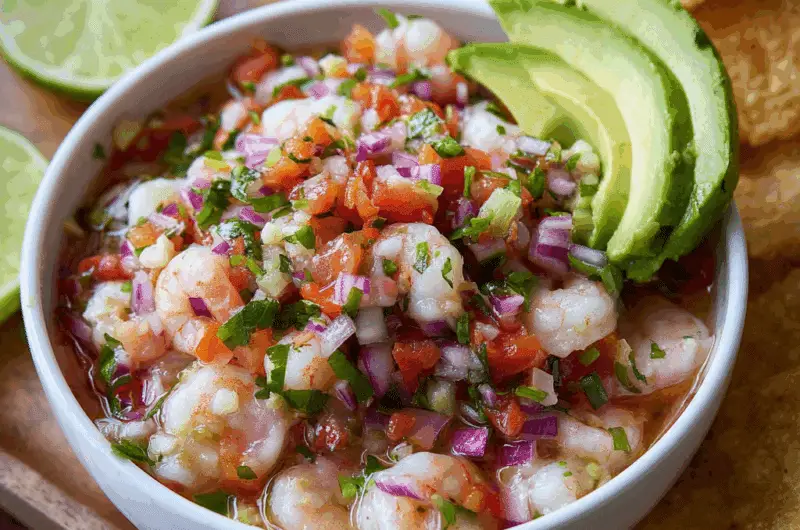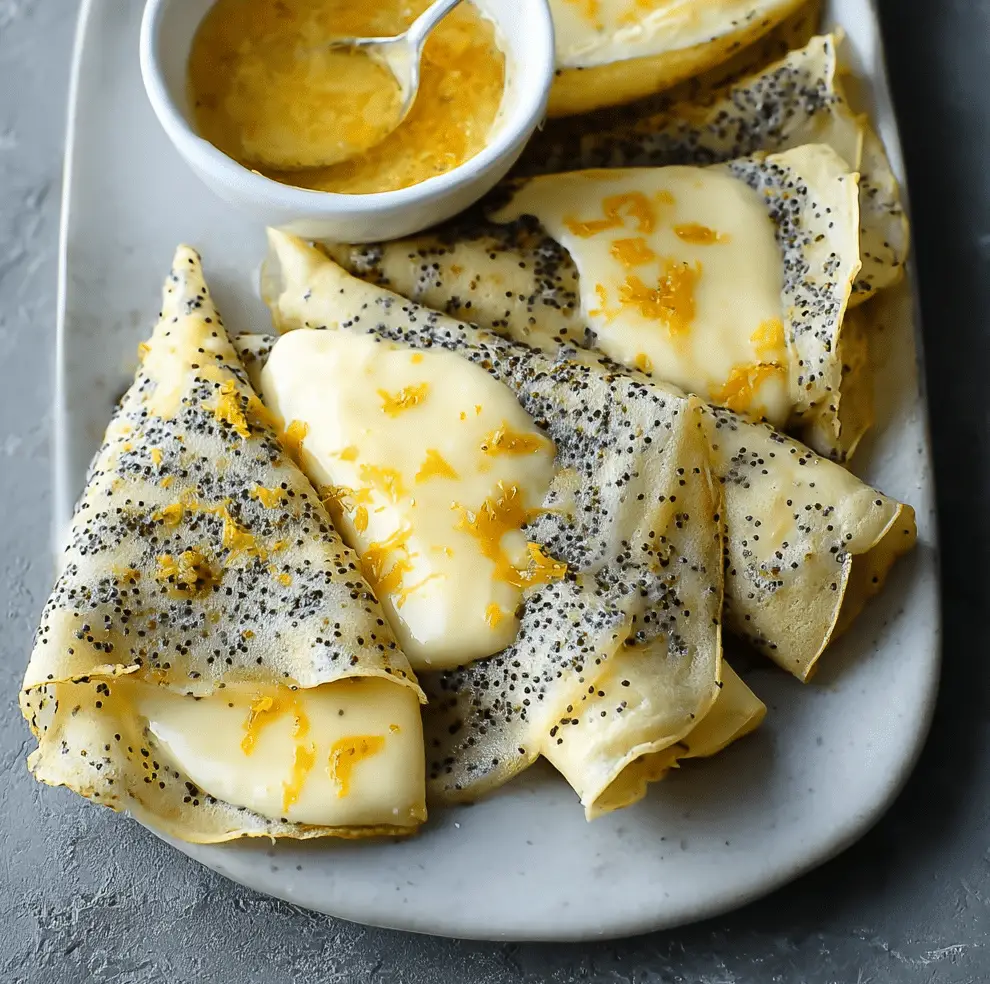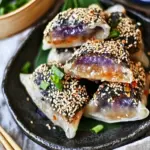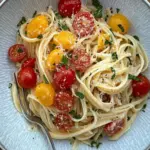The bright and bold flavors of Shrimp Ceviche make it a standout dish that’s as beautiful as it is delicious. Marinated in fresh citrus juices and tossed with crisp veggies and creamy avocado, every bite delivers a refreshing explosion of taste and texture.
This ceviche is a quick and healthy option that’s perfect for summer gatherings, light lunches, or as a starter for a seafood feast. It’s naturally gluten-free, dairy-free, and low-carb, making it ideal for many dietary lifestyles. Best of all? There’s no cooking required — just chop, chill, and enjoy!
Full Recipe
Ingredients:
-
1 lb raw shrimp (peeled, deveined, chopped into small pieces)
-
1 cup freshly squeezed lime juice (about 8–10 limes)
-
1/2 cup freshly squeezed lemon juice (about 2–3 lemons)
-
1/2 small red onion, finely chopped
-
1 jalapeño pepper, deseeded and finely diced
-
1 cucumber, peeled and diced
-
1 cup cherry tomatoes, quartered
-
1 ripe avocado, diced
-
1/4 cup fresh cilantro, chopped
-
Salt and pepper to taste
Directions:
-
Place the chopped shrimp in a glass bowl and pour in the lime and lemon juice. Make sure the shrimp is fully submerged.
-
Cover and refrigerate for 30–45 minutes, or until the shrimp turns opaque and is “cooked” in the citrus juice.
-
Once the shrimp is ready, drain about 70% of the citrus juice, leaving a little to keep it moist.
-
Add the red onion, jalapeño, cucumber, cherry tomatoes, and cilantro to the bowl. Gently stir to combine.
-
Season with salt and pepper to taste.
-
Just before serving, gently fold in the diced avocado.
-
Serve chilled with tortilla chips, lettuce cups, or on tostadas.
Prep Time: 15 minutes | Cooking Time: 0 minutes (citrus marinade time: 30–45 min) | Total Time: 45–60 minutes
Kcal: 185 kcal | Servings: 4 servings
What is Shrimp Ceviche?
Shrimp ceviche is a vibrant and refreshing dish made from raw shrimp “cooked” in acidic citrus juice, most commonly lime and lemon. It originates from Latin American coastal regions and is especially popular in countries like Peru, Mexico, and Ecuador. The citric acid in the juice denatures the proteins in the shrimp, giving them the appearance and texture of being cooked, without any heat. This creates a uniquely fresh and zesty seafood dish that’s light, nutritious, and incredibly flavorful.
Typically, shrimp ceviche includes a mix of finely chopped vegetables such as onions, cucumbers, jalapeños, and tomatoes. These add crunch, freshness, and a balance of textures to the softness of the shrimp. It’s often finished with cilantro and avocado, lending herbal depth and creamy richness to the mix. Served cold, it’s a dish that celebrates natural flavors and the art of minimal cooking.
Cultural Background and Origins
Ceviche has been a staple in Latin American cuisine for centuries. Though Peru is often credited as the birthplace of ceviche, each country has its own spin. Mexican-style shrimp ceviche, for example, is known for its bright and punchy flavors, often incorporating tomatoes and chili peppers. In Ecuador, you might find shrimp ceviche served in a soupy tomato base with plantain chips on the side.
What makes shrimp ceviche so beloved across cultures is its versatility and simplicity. Coastal communities used fresh, just-caught seafood and allowed citrus fruits to preserve and flavor the dish naturally. This method not only avoided the need for heat but also preserved the delicate essence of the seafood. It remains a culinary celebration of freshness, tradition, and resourcefulness.
Why You’ll Love This Dish
There are countless reasons to fall in love with shrimp ceviche. First and foremost, it’s a no-cook recipe, which makes it perfect for warm weather, busy weeknights, or anyone trying to avoid heating up their kitchen. It’s quick to prepare and doesn’t sacrifice flavor for speed—every bite is tangy, spicy, juicy, and satisfying.
Ceviche is also incredibly healthy. It’s high in protein, low in calories, and full of antioxidants from fresh vegetables and herbs. Avocado adds healthy fats and creaminess, while jalapeños give it a subtle kick. Since it’s naturally gluten-free, dairy-free, and grain-free, it fits into many dietary lifestyles including keto, paleo, and Whole30.
Best Practices for Making Shrimp Ceviche
When preparing shrimp ceviche, quality and safety are paramount. Start with fresh or high-quality frozen shrimp. If using frozen, ensure they’re fully thawed before marinating. To maximize food safety, many cooks choose to lightly poach the shrimp for 30–60 seconds in boiling water before marinating, especially when preparing ceviche for a crowd or during warmer months.
Citrus juice should always be freshly squeezed. Bottled versions often lack the brightness and acidity needed to “cook” the shrimp properly and may have preservatives that alter the taste. A mix of lime and lemon juice is ideal for both flavor and acidity balance.
Another key tip is to not over-marinate. Once the shrimp turn opaque (usually around 30–45 minutes), drain most of the citrus to avoid a mushy texture. Then add your chopped veggies and herbs to keep the overall dish crisp and vibrant. Avocado should always be added last to prevent it from breaking down or browning.
Flavor Profile and Texture
The beauty of shrimp ceviche lies in its contrast of flavors and textures. The shrimp is soft yet firm, carrying the sharp zing of the lime and lemon. Cucumber and onion offer crunch, while tomatoes bring subtle sweetness. The jalapeño adds a mild heat that can be adjusted based on preference. Fresh cilantro lifts the dish with a peppery note, and the avocado rounds everything out with its creamy, mellow richness.
Every forkful of shrimp ceviche offers a perfect balance of brightness, heat, and freshness. It’s a dish that wakes up your taste buds and leaves you feeling light and satisfied.
Serving Suggestions
Shrimp ceviche is incredibly versatile in how it’s served. The most common way is with tortilla chips, turning it into a flavorful appetizer or snack. You can also serve it on tostadas, inside lettuce cups, or even in mini shot glasses for a fun party appetizer. Some enjoy it with crackers or as a topping for tacos or grilled fish.
For a fuller meal, pair shrimp ceviche with a light side such as a quinoa salad, coconut rice, or plantain chips. A cold beer or citrusy cocktail makes an excellent beverage companion to enhance the coastal vibes.
Variations and Add-ins
One of the best things about shrimp ceviche is how customizable it is. You can add mango or pineapple for a tropical twist, or substitute the jalapeño with serrano or habanero if you like more heat. For a more savory profile, add minced garlic or a splash of olive oil. Some even add clam juice or a few spoonfuls of tomato juice for a Mexican-style coctel de camarones experience.
You can swap shrimp for scallops, white fish, or a combination of seafood. Vegan versions use hearts of palm or young coconut meat in place of shrimp. However you modify it, the core technique remains the same—let fresh citrus do the “cooking.”
Nutritional Benefits
Shrimp ceviche is a powerhouse of nutrition. Shrimp is rich in protein, selenium, vitamin B12, and iodine—all essential nutrients that support metabolism, immunity, and thyroid function. The absence of oil and dairy means fewer calories and less saturated fat, making it ideal for those watching their weight or cholesterol levels.
The inclusion of raw vegetables means you’re getting plenty of fiber, vitamin C, and hydration from water-rich produce like cucumber and tomato. Avocado provides heart-healthy monounsaturated fats, potassium, and vitamin E. Together, these ingredients form a well-rounded dish that’s not only tasty but good for your body.
Common Mistakes to Avoid
One common mistake when making shrimp ceviche is letting the shrimp over-marinate. While citrus will continue to break down the protein, leaving it too long can turn the shrimp rubbery or mushy. Another is using bottled juice or underripe avocados, which affects both texture and flavor. Always use ripe, fresh ingredients for best results.
Avoid overcrowding your mixture with too many ingredients. Balance is key. Let the shrimp be the star, supported by crisp vegetables and flavorful herbs, rather than masking it with too many additions.
Storage and Leftovers
Shrimp ceviche is best enjoyed fresh, but it can be stored in an airtight container in the refrigerator for up to 24 hours. After that, the texture may degrade and the avocado can brown. If you’re preparing it ahead of time, consider adding the avocado just before serving to keep everything looking and tasting fresh.
For meal prep, you can pre-chop all your vegetables and keep them separate, mixing with the citrus-cooked shrimp just before eating. This method helps maintain the crunchy texture and vibrant appearance of the dish.
Conclusion
Shrimp ceviche is more than just a dish—it’s a celebration of clean, bold, and uncomplicated flavors. It offers a perfect example of how simple ingredients, when treated with care, can yield an extraordinary culinary experience. Whether you’re new to Latin cuisine or a seasoned fan, this dish offers something to love for everyone—from the refreshing taste to the health-conscious benefits and beautiful presentation.
It’s a standout choice for summer meals, entertaining guests, or simply treating yourself to something light yet satisfying. With its adaptability and universal appeal, shrimp ceviche deserves a permanent spot in your culinary repertoire. Once you try it, you’ll keep coming back for more—no cooking required.








